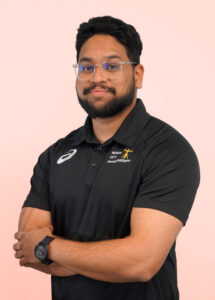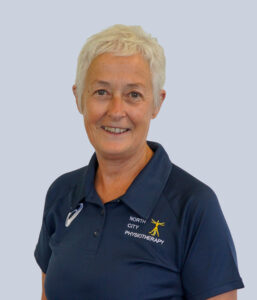
Groin pain from can originate from a number of sources notably in sports, some being simpler to tackle compared with others which are more complex, frustrating and stubborn to heal. It may not be the most ‘comfortable’ area to treat, but don’t let anxiety or embarrassment stop you from getting help. Groin injuries are common in many sports and physios can treat it professionally getting you back on the field pain-free, doing what you love.
Your inner thigh or groin area is made up of five muscles that originate from your pelvis and run down your inner thigh working to pull your legs together. These five muscles together are called your adductor muscles. They function intricately with muscles round your lower back, upper thigh and buttocks to provide a strong stable base for running, sprinting and jumping; as well as balance and control for one legged activity like kicking, lunging, or side stepping.
The importance of groin strength in any physically demanding sport cannot be emphasised enough. With strength includes good flexibility and muscle endurance to ensure optimal function. The groin muscles are actively contracting to move you around the field and kick balls, lunge and side step but at the same time they are working with your core and lower back, glutes, quads and hamstring muscles to ensure a strong stable pelvis co-ordinating all these ‘one-legged’ activities. The impact forces sustained during running and jumping can be anywhere from 3 times your body weight to more than 6 times!
Your muscles act as shock absorbers to help absorb and dissipate these loads. Around the groin and pelvis specifically with every jump or stride gravity is also pushing the weight of your internal organs downwards; where strong muscles are crucial to aid ligaments in ‘holding’ everything inside! So, you can see how weak, fatigued or injured groin muscles could complicate an injury or result in one.
With any groin injury it is essential not only to have hands-on physiotherapy treatment in the early stages, but to continue with a full rehabilitation programme to ensure best outcomes and prevent recurrence of the injury.Strengthening your pelvis and core including your lower back and gluteus (buttock) muscles is essential to ensure good control and stability around your groin. Correcting underlying muscle imbalances (in strength or flexibility) through exercise correction and neural mobilisation stretches is also key to injury prevention and management.
Your physio should also assess your posture with any associated groin pain injury. Your groin, as part of your hips, are the powerhouse of your lower limbs for propulsion and jumping. Commonly associated with pelvic and groin injuries are short, tight hip flexors. This is usually a consequence of lifestyle and work environment i.e hours sitting at your desk, watching TV, commuting and driving. Your hips are bent/flexed and associated structures on the anterior (front) of your hips muscles and tendons become short and tight which can impact significantly on your posture and subsequent optimal functioning of structures around your back, pelvis and lower limbs. If you have had a groin injury or want to prevent one have your physio assess your posture and advise you on exercises, stretches and workplace adjustments to correct this.
Don’t leave a groin niggle to become a debilitating pain, early treatment will ensure the best results and get you back on the field as quickly as possible!











